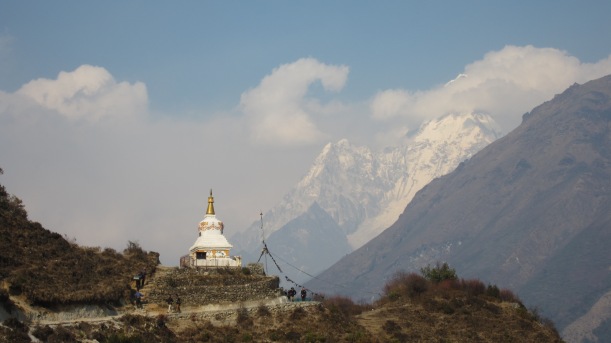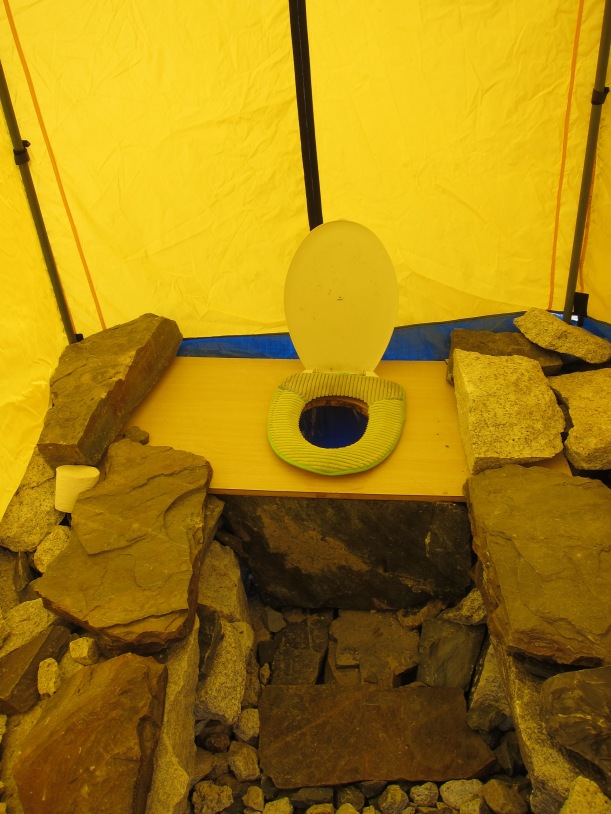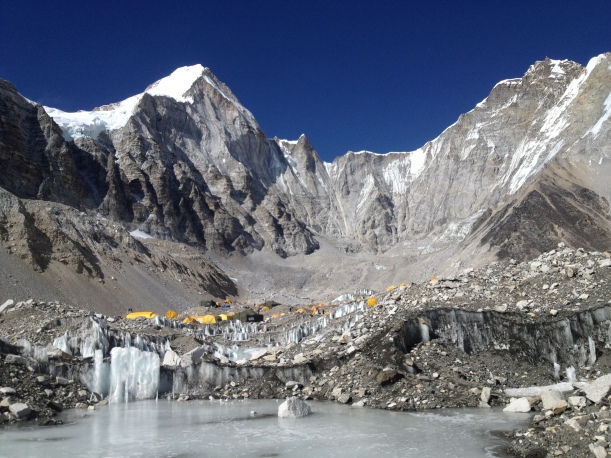Trekking down was rather like seeing the trek up on fast rewind. The altitude it had taken us nearly a fortnight of exertion to acquire was lost again in just three days: being better acclimatised, the absence of any limits on the speed at which your body can adjust to decreasing altitude and, of course, the assistance of gravity will do that. The second time round my impressions were different, however. We were very fortunate with the weather throughout the trek but on our return to Pheriche we awoke to a light dusting of snow across a valley that we had seen overcast and misty/unexpectedly warm and sunny on the way up. Suspecting – correctly – that the snow would soon melt away, our cameras went into overdrive to capture a few last ‘Kodak moments’.

The only snow of our trek, adding a picture postcard touch to an already picturesque farm just below Pheriche.
The intervening experiences at Lobuche and Everest Base Camps had altered my assessment of the tea houses we revisited. Despite the ice on the inside of the window (and the snow on the ground) my room in Pheriche now seemed cosy and warm. Beds that had felt a little hard on the way up now seemed luxuriously soft. Scenery that had seemed barren now appeared quite lush compared to the desolate rock and ice of the glacier.
The season had advanced while we’d been at Base Camp. Crops that had barely sprouted when we walked up were now grown tall. Fields had been planted and – best of all – yak calves had been born. I saw several of these little guys between six and 12 days old (thanks, Mingma) and they were so cute! I considered smuggling one home before remembering how large they grow; I suspect a yak would not thrive in my small London flat, even if I refrigerated it. And I’m not so sure I will either, to be honest, now that I’ve become accustomed to so much open space, fresh air and spectacular views wherever I look – all commodities in short supply back home.
The scenery certainly bore a repeat view, especially when we came upon them at a different time of day. A view that we’d enjoyed in the morning took on a totally different aspect when we passed back that way in the late afternoon.
Unsurprisingly, though, it was a journey without too many surprises as we encountered the reverse sequence of villages and vistas that I recalled from the trek up. But on the last afternoon, on the final stretch back to Lukla, I heard someone call out my name and I turned to see three friends I’d first met on a trip in Africa in 2009 walking the other way on the trail. ‘Surprised’ would be more than an understatement. Last I’d heard, they were in London and Singapore (where I’d visited them last year) respectively. It really is a small world, and meeting them in Nepal was an amazing piece of serendipity. According to Lonely Planet, between 35,000 and 37,000 people trekked in the Everest region last year so the odds of seeing someone I knew were tiny!
My chance meeting was all the more enjoyable for being so completely unexpected, but as we got back within sight of the airport I reflected that that was enough of a surprise to be going along with. What I most wanted now was a predictable and reassuringly uneventful flight back to Kathmandu…





























